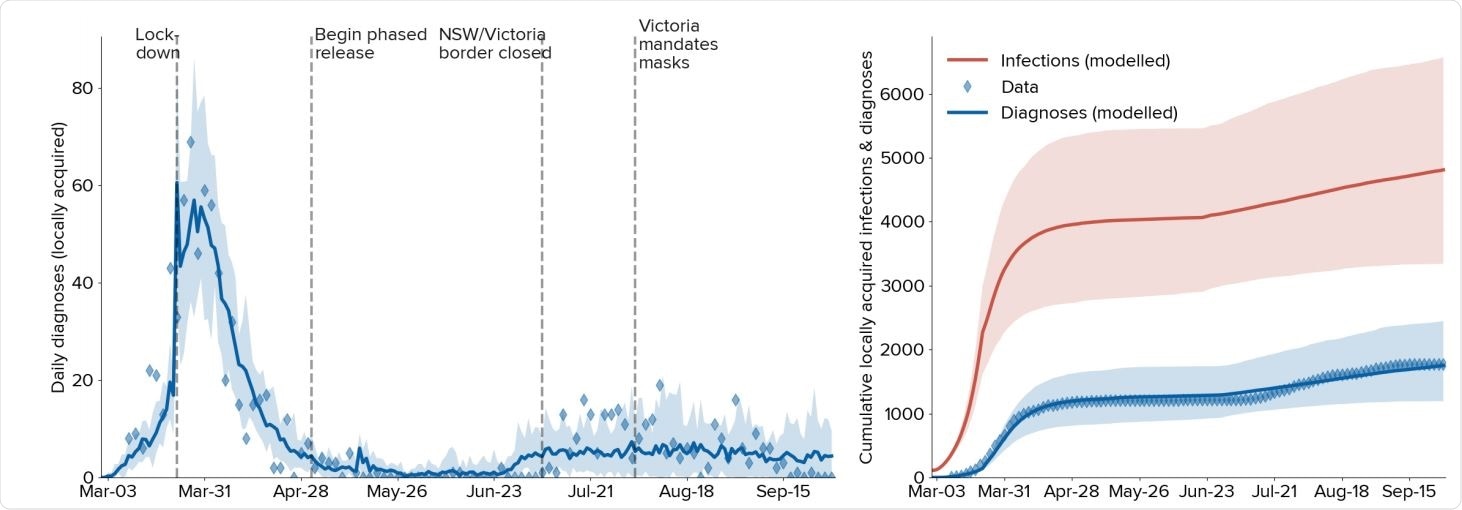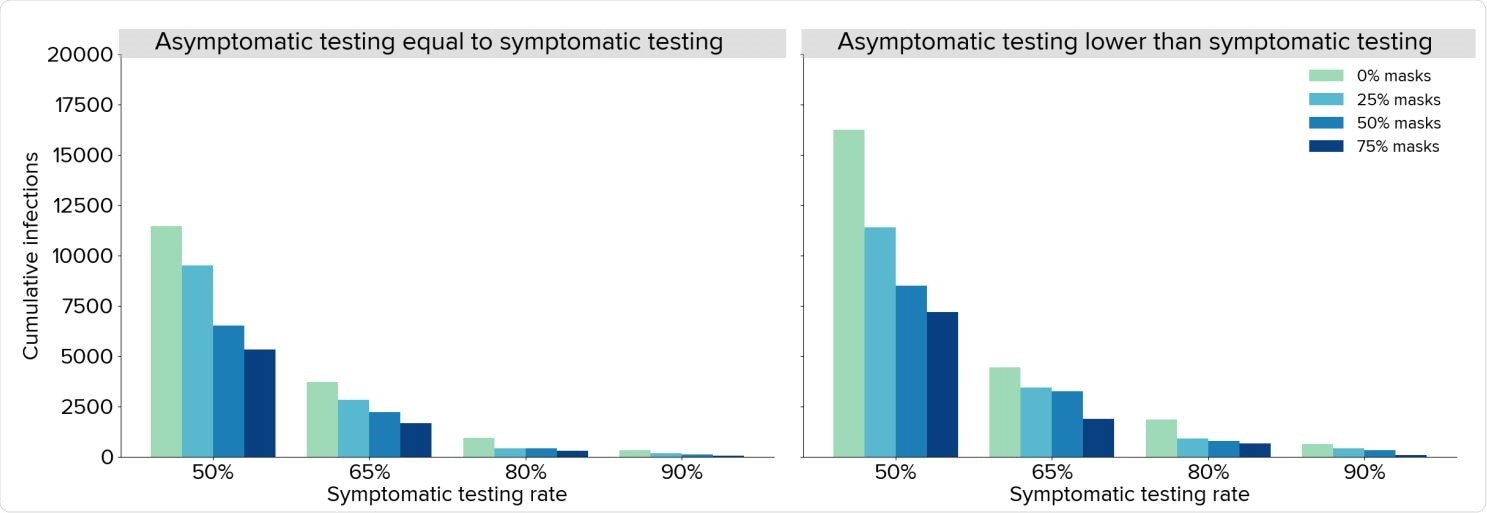Researchers in Australia, Denmark, and the United States have conducted a study showing the extent to which community testing, contact tracing, and mask-wearing can lower the transmission of severe acute respiratory syndrome coronavirus 2 (SARS-CoV-2) in the Australian state of New South Wales.
SARS-CoV-2 is the agent responsible for the coronavirus disease 2019 (COVID-9) pandemic that continues to sweep the globe, increasingly posing a threat to global health and the economy.
Robyn Stuart (Burnet Institute, Melbourne) and colleagues say the study suggests that community testing, tracing, and mask-wearing can effectively control the spread of SARS-CoV-2 in community settings.
The findings also suggest that of all the interventions considered, symptomatic testing, contact tracing, and testing of contacts are the most important.
However, adopting a multi-faceted strategy that combines testing, tracing, and mask-wearing, alongside adherence to hand hygiene and social distancing protocols, is probably the most reliable way to ensure the community-based transmission is kept under control, advises the team.
A pre-print version of the paper is available on the server medRxiv*, while the article undergoes peer review.

Calibration of the model to the NSW epidemic. Solid lines indicate the median model projections over 20 model runs; shaded areas indicate 95% projected intervals over different initialisations; blue diamonds indicate data on confirmed locally-acquired cases.
The spread of SARS-CoV-2 is unprecedented
Since the first cases of COVID-19 were first identified in Wuhan, China, late last year, it quickly became evident that SARS-CoV-2 spreads at an unprecedented and potentially exponential rate.
“Therefore, as long as a substantial proportion of the population remains susceptible to infection, the potential for new epidemic waves persists even in settings with low numbers of active COVID-19 infections, unless sufficient countermeasures are in place,” writes Stuart and colleagues.
Across the globe, the mitigation measures introduced to contain the spread of the pandemic have already been very effective. During the second half of 2020, many governments decided to move from the strict, crisis-management approach to more relaxed strategies focused on minimizing the risk of transmission while also allowing previous societal and economic activities to resume.

Estimated total infections over October 1 – December 31, 2020 under different assumptions about testing rates and mask uptake, assuming all community contacts can be traced within a week with a mean time to trace of 1 day. Projections represent the median of 20 simulations.
When used in combination with hand hygiene and social distancing practices, community testing, contact tracing, and mask-wearing can allow for relatively high mobility, say the researchers.
“Testing and contact tracing means that only those at greatest risk of transmitting the virus need to stay home, while masks mean that people with undiagnosed infections present less of a risk to others,” they write.
Estimating how susceptible New South Wales is to a new epidemic wave
Now, Stuart and colleagues have examined the uptake of these approaches in the Australian state of New South Wales. This setting has seen prolonged low transmission, non-universal mask use, high mobility, and the use of a well-functioning test and trace system.
The researchers set out to explore how susceptible New South Wales would be to resurgences in the spread of SARS-CoV-2 between October 1st and December 31st, 2020, under different levels of testing, tracing, and mask-wearing.
“In New South Wales, mask use has been encouraged in particular settings since July, but not mandated; at the same time, there has been a strong focus on contact tracing,” they write. “In this study, we consider a range of testing and contact tracing levels, and assess the balance between masks, testing, and contact tracing as a means of controlling community-based transmission.”
What did the study find?
The team found that mask-wearing had the most significant relative effect on transmission when community testing and tracing rates were lower and the least impact when testing and tracing rates were higher.
With a very high testing rate - where 90% of symptomatic individuals and 90% of known case contacts were tested - the team estimated that the epidemic in New South Wales would be kept under control until at least the end of 2020, providing that rapid and effective contact tracing is in place.
If a very high testing rate is adopted, the team says the estimated number of new cases between October 1st and December 31st would be as few as 70–110 under a high mask uptake scenario, compared with 340 to 1,400 under a no mask scenario.
However, “if testing rates are lower, we estimate that mask use can play an important role in reducing the potential for epidemic resurgence,” say the researchers.
Across similar levels of mask-wearing and contact tracing, the number of new infection cases over the same period would be up to 6 times higher if the testing rate fell from 90% to 80%; 17 times higher if it fell to 65%, and more than 100 times higher if it fell to 50%.
A multi-faceted strategy is likely to be the most robust
“Of the interventions considered, this study suggests that maintaining high levels of symptomatic testing, contact tracing, and testing of contacts is the most important,” said Stuart and colleagues.
“However, pursuing a strategy that combines aggressive testing, high mask usage, and effective contact tracing, alongside continued hygiene and distancing protocols, is likely to be the most robust means of controlling community-based transmission of SARS-CoV-2,” they conclude.
*Important Notice
medRxiv publishes preliminary scientific reports that are not peer-reviewed and, therefore, should not be regarded as conclusive, guide clinical practice/health-related behavior, or treated as established information.